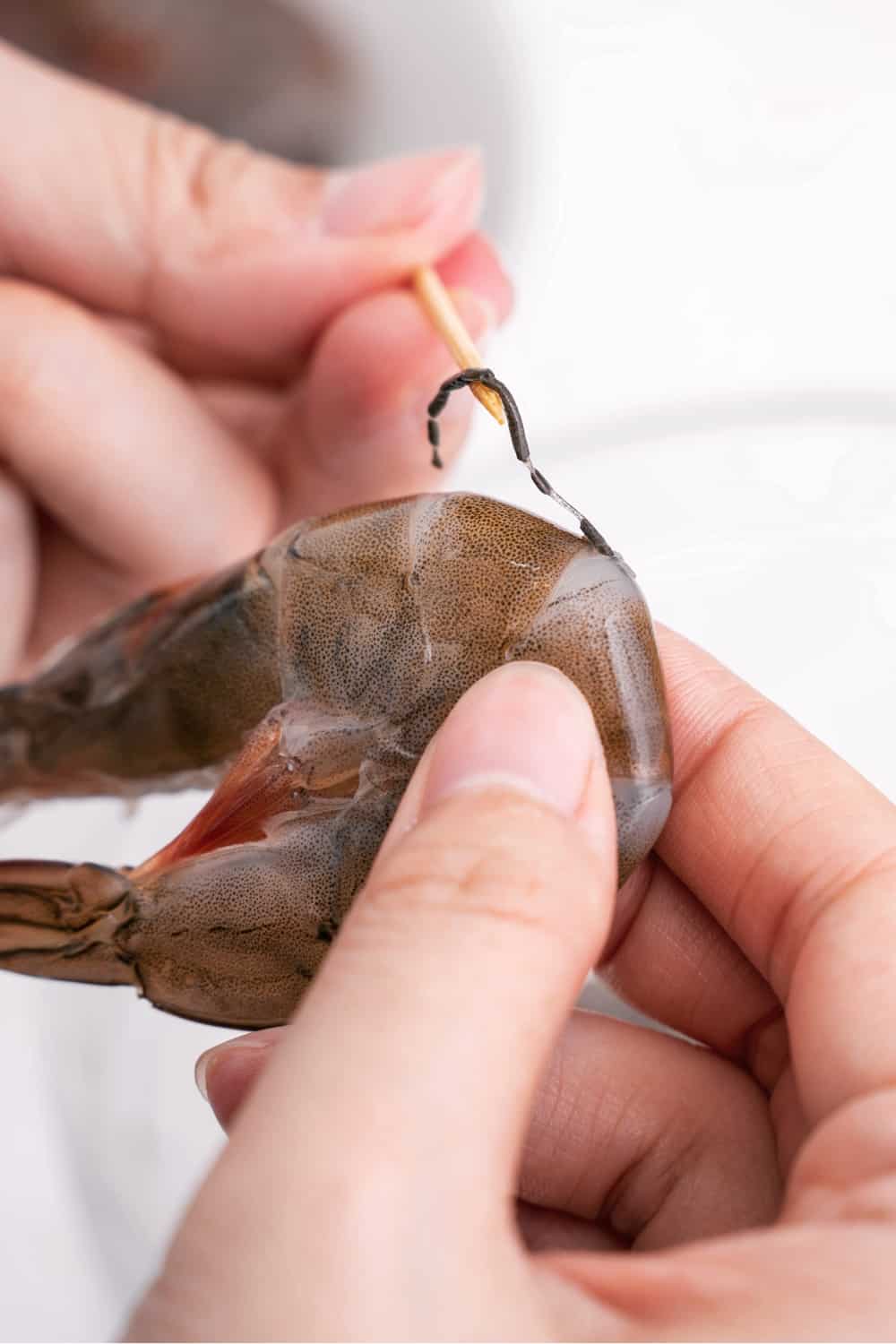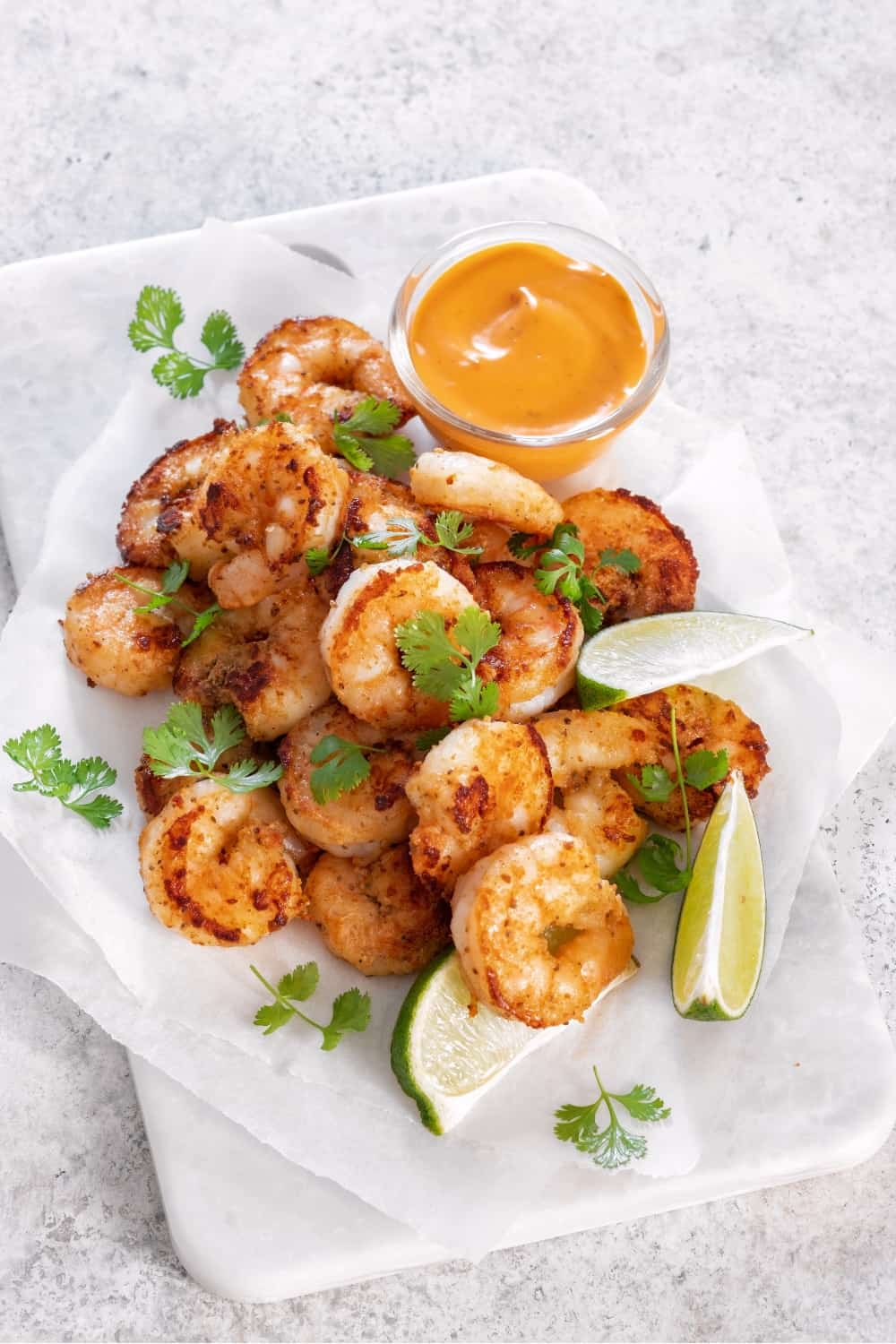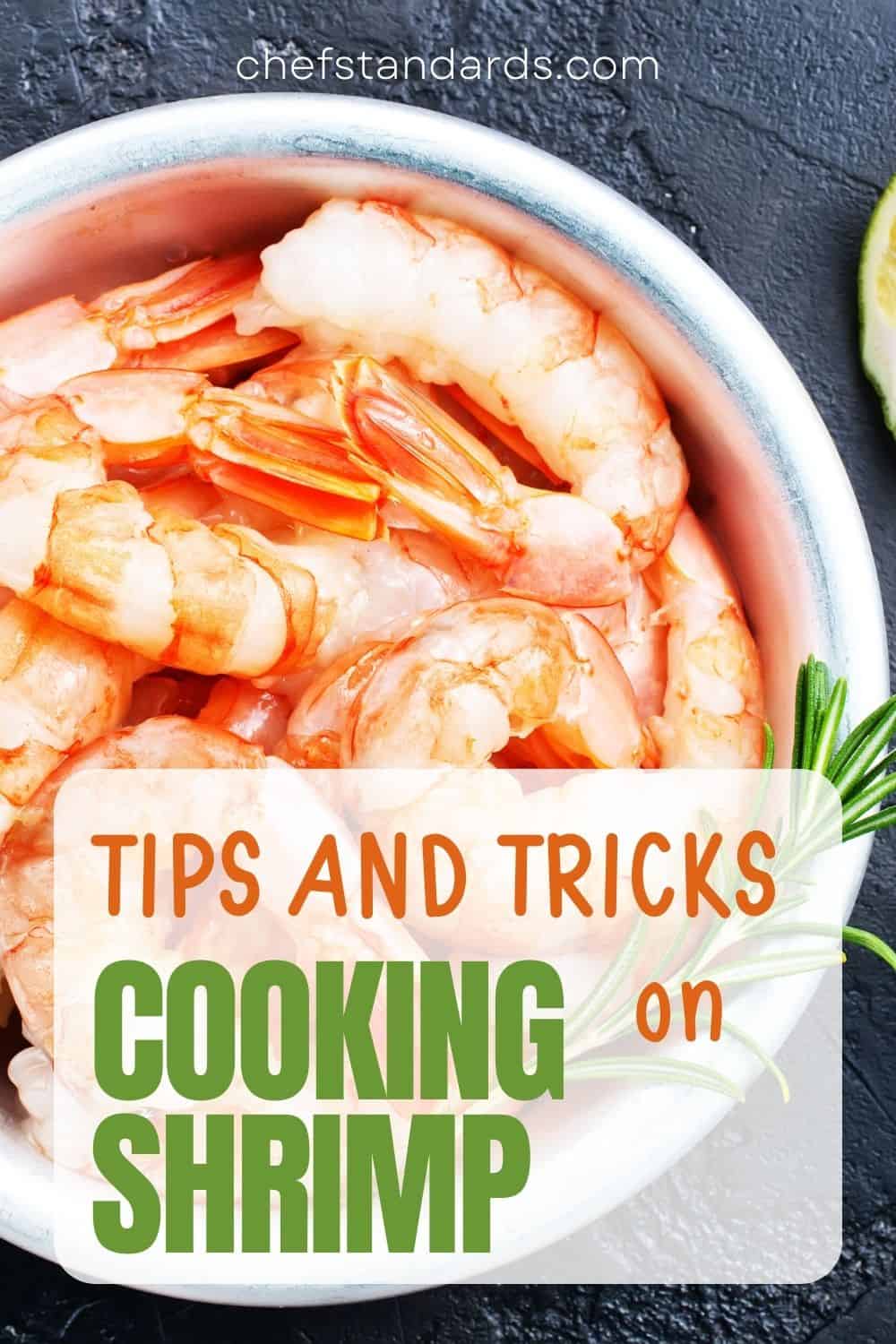Do you struggle with cooking shrimp to perfection? Okay, let me rephrase this: Have you ever ended up with overcooked or undercooked shrimp?
Been there, done that.
Overcooked shrimp can be tough and rubbery, while undercooked shrimp can be unsafe to eat. Luckily, that is a thing of the past because today I’ll show you how to tell if shrimp is cooked to perfection.
Also, I’ll provide some game-changing tips to take your shrimp cooking skills to the next level. So, let’s get started!
7 Ways To Tell Your Shrimp Is Cooked To Perfection
There are many ways to determine if your shrimp is cooked through, and using various methods can give you the most accurate results. Besides color, texture, and timing, there are several other cues you can look for to ensure that your shrimp is cooked to perfection:
1. Color

Ideally, cooked shrimp should be pink with a slight red tint. Be wary of shrimp that are gray or brown in color, as this can indicate that they have been overcooked.
Also, beware of white spots on your shrimp.
2. Texture
When it comes to the texture of your cooked shrimp, you want it to be firm with a slight snap.
Avoid shrimp that are mushy or have a slimy texture, as this can be a sign that they are undercooked or even spoiled.
3. Smell
The smell of your cooked shrimp can also give you some important clues about its freshness and quality. Well, its smell can also make you question whether shrimp is a fish, but you shouldn’t worry about it.
Cooked shrimp should have a mild, sweet scent. Avoid shrimp with a strong, fishy odor because this means that they are not fresh or have been overcooked.
4. Taste
Cooked shrimp of good quality should have a sweet, mild flavor without any bitterness or metallic tastes. If you notice any strange or off flavors, it could mean that the shrimp is overcooked or has gone bad.
5. Timing

Timing is everything when it comes to cooking shrimp. Since it cooks quickly, you need to keep a close eye on it to avoid overcooking.
Small shrimp will take 2-3 minutes to cook, while larger shrimp will take 5-7 minutes. Make sure to check on it frequently to get it just right.
6. Shape
When cooked properly, shrimp should curl into a C shape. Overcooked shrimp will curl into an O shape, which can make it tough and rubbery. Keep an eye on the shape of your shrimp to ensure it’s cooked just right.
7. Internal temperature
Measuring the internal temperature of your cooked shrimp can help ensure that it’s safe to eat and cooked to perfection.
According to the FDA, you should aim for an internal temperature of 145°F (63°C) when measured with a food thermometer.
PRO TIP: To get an accurate reading, insert the thermometer into the thickest part of the shrimp.
10 Game-Changing Tips For Cooking Shrimp
From marinating to deveining, there are many techniques and tricks that can help you achieve perfectly cooked and delicious shrimp every time. Here are some game-changing tips to try out the next time you prepare shrimp:
1. Don’t rinse the shrimp
Did you know that rinsing your shrimp under water can actually make it less tasty? It removes the salt (flavor) and can leave the shrimp bland. Instead, before cooking, pat the shrimp dry with some paper towels.
2. Remove the vein from your shrimp

Deveining your shrimp doesn’t only make it more visually appealing but also improves its texture and flavor.
The vein in shrimp can sometimes contain grit or sand. Therefore, removing the vein can prevent the shrimp from becoming gritty or unpleasantly textured.
3. Marinate for enhanced taste
If you’re looking to add some flavor and texture to your shrimp, then marinating is a must!
Mix your favorite marinade ingredients in a bowl or zip-top bag, add the shrimp, and refrigerate for at least 30 minutes before cooking.
Some great marinade options include garlic, lemon, herbs, and spices. Here’s one of my favorite shrimp marinade recipes in the video below:
4. Poach your shrimp
Another great way to cook shrimp is by poaching it. To poach shrimp, heat a flavorful liquid (such as broth, wine, or beer) in a pan, add the shrimp, and cook until they turn pink and opaque. It’s great for dishes like shrimp cocktails or chilled shrimp salads.
5. Grill your shrimp
Grilling shrimp gives it a smoky flavor and creates beautiful grill marks. Just brush your shrimp with oil and seasoning and cook it over medium-high heat for a couple of minutes on each side. Don’t forget to skewer them if you want an easy and delicious way to serve them up.
6. Don’t overcrowd your pan or grill
When cooking shrimp, make sure not to overcrowd your pan or grill. This can cause the shrimp to steam instead of sear, resulting in a mushy texture and bland flavor. To avoid this, cook the shrimp in batches or use a larger pan or grill.
7. Use a non-stick pan
Did you know that when you cook shrimp, it can sometimes stick to the pan? Of course, you did. When that happens, it can make the shrimp come out unevenly cooked or tear apart.
But, I’ve got a trick for you – using a non-stick pan can help prevent this from happening! So, next time you’re cooking shrimp, grab a non-stick pan, and you’ll be good to go.
8. Use a meat thermometer
Using a meat thermometer can make cooking shrimp super easy. Insert the thermometer into the thickest part of the shrimp and cook it until it reaches an internal temperature of 145°F (63°C).
I can’t imagine cooking shrimp without using a meat thermometer because it takes the guesswork out of cooking and ensures that your shrimp is cooked perfectly every time.
9. Pair your shrimp with the right sauce

When it comes to sauce, choosing the right one can really make your shrimp dish pop. Some great options include garlic butter, cocktail sauce, sweet chili sauce (including sweet chili sauce substitutes), or lemon herb sauce.
Just make sure to pick a sauce that complements the flavors of the shrimp and the other ingredients in your dish.
10. Serve immediately after cooking
Lastly, one thing to keep in mind when cooking shrimp is that it can dry out quickly if left sitting out after cooking. To ensure that your shrimp is juicy and flavorful, serve it immediately after cooking. This way, you’ll get the most delicious results possible!
Takeaway
Cooking shrimp to perfection can be challenging, but it’s not impossible. From properly deveining your shrimp to using a timer or thermometer to avoid overcooking, the possibilities are endless when it comes to cooking shrimp the right way.
So the next time you’re in the mood for shrimp, follow these tips and experiment with different cooking methods. Happy cooking!
P.S. Don’t forget to eat the shrimp tails! They can be really tasty and also provide some additional nutrition.

